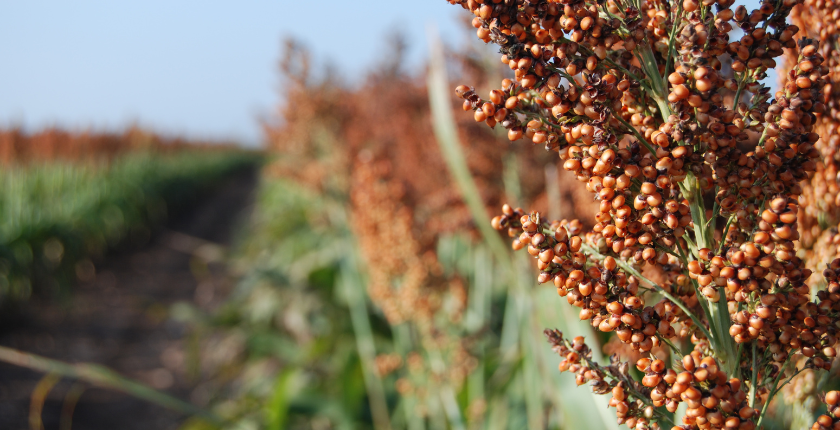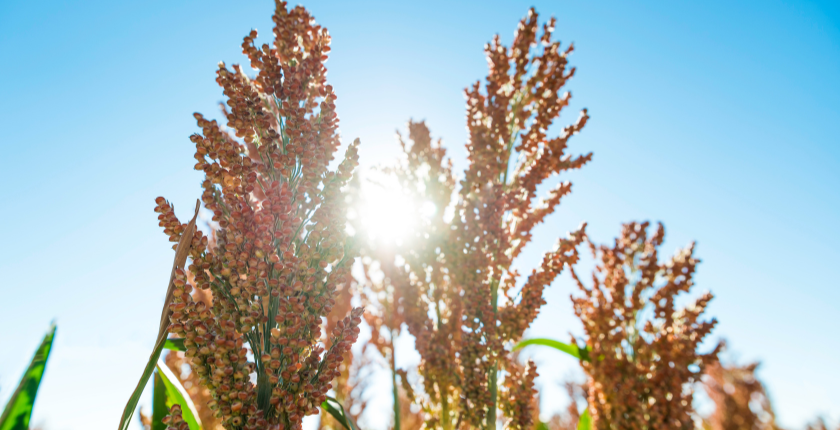Table of Contents
Discover the What is Milo Used For (sorghum) – a nutritional powerhouse rich in protein, vitamins, and antioxidants. Learn its benefits, how to consume it, and why Milo is a healthy addition to diets for humans and livestock.
Milo is a nutritional supplement made from the grains of sorghum grass. It has been used for centuries in various parts of the world but has recently grown in popularity due to its many health benefits. Milo can be consumed as a beverage or added to recipes, and it provides an excellent source of nutrients like vitamins, minerals, fiber, and antioxidants.
What is Milo Used For?
Milo, also known as sorghum, is a versatile grain widely used for various purposes. Primarily cultivated as a cereal crop, Milo serves as a staple food in many regions, providing a nutritious source of carbohydrates and essential nutrients. Beyond its role in human consumption, Milo plays a crucial role in animal feed, contributing to the nutritional needs of livestock.
Additionally, this drought-resistant grain has found applications in the production of sorghum-based products like flour, syrup, and beverages. With its adaptability and nutritional value, Milo has become a significant agricultural commodity with diverse uses, spanning from human nutrition to animal husbandry and industrial processing.
Read Also: Fort Lauderdale Airport food
Benefits of Consuming Milo
There are many reasons why people choose to consume Milo regularly. Here are some of the top benefits:
- High in Protein – Milo contains 11g of protein per serving, making it an excellent choice for boosting daily protein intake. The amino acids in Milo help support muscle growth and maintenance.
- Source of Key Vitamins and Minerals – Milo provides important micronutrients like iron, magnesium, phosphorus, zinc, copper, and manganese. It contains B vitamins like thiamin, riboflavin, and niacin which are necessary for energy production.
- High Fiber Content – Each serving of Milo supplies 7g of dietary fiber, fulfilling about 25% of the daily recommended fiber intake. The fiber in Milo promotes digestive and heart health.
- Antioxidant Protection – Milo contains beneficial plant compounds like flavonoids and phenolic acids that have antioxidant effects on the body. Antioxidants help neutralize harmful free radicals and reduce oxidative stress.
- Bone Health – The minerals in Milo like calcium, magnesium, and phosphorus help build and maintain strong bones. The nutrients in Milo help prevent bone-related disorders like osteoporosis.
- Energy Booster – Milo is a good source of carbohydrates that can help boost energy levels. The B vitamins also aid in energy production and metabolism.
- Prebiotic Effects – The fiber in Milo acts as a prebiotic by promoting the growth of healthy gut bacteria. The prebiotics in Milo support digestive health.
- Gluten-Free – Milo is naturally gluten-free, making it a good choice for anyone following a gluten-free diet due to health reasons or preferences.
- Low Glycemic Index – Despite containing carbs, Milo has a low glycemic index of 59. This means it does not cause sharp spikes in blood sugar levels.
How to Consume Milo
Milo is very versatile and can be consumed in different ways:
- Add to Milk or Plant Milk – The most popular way to consume Milo is to mix it with warm milk or plant-based milk like almond milk. Add 1-2 tablespoons per cup and stir well.
- Smoothies and Shakes – Add a few tablespoons of Milo to smoothies or protein shakes for extra nutrition. It works well blended with fruits, yogurt, milk, etc.
- Over Yogurt or Oatmeal – Top yogurt, oatmeal, or other breakfast bowls with 1-2 tablespoons of Milo. It adds crunch and a malty flavor.
- Baked Goods – Add 2-3 tablespoons of Milo per cup of flour when baking muffins, breads, waffles, pancakes, etc. It infuses a nice flavor.
- Homemade Granola Bars – Mix Milo into homemade granola bars along with oats, nuts, seeds, dried fruit, nut butter, and honey.
- Sprinkled on Fruit – Fresh fruit tastes delicious when topped with a sprinkling of Milo. Try it on slices of banana, berries, apples, or pears.
- Energy Balls and Bars – Mix Milo into the dough when making homemade energy balls or bars for an extra nutrition boost.
- Hot Cereal – For a savory hot breakfast, cook Milo with water or milk as you would oatmeal. Top with fruit, cinnamon, or nuts.

Nutrition Facts of Milo
Here is the nutrition breakdown for 1 serving (40g) of Milo:
- Calories: 160
- Fat: 2g
- Carbs: 30g
- Fiber: 7g
- Sugars: 7g
- Protein: 11g
Milo also contains at least 10% of the recommended daily intake for vitamins like folate, niacin, and vitamin B6. It is rich in minerals like calcium, iron, magnesium, phosphorus, potassium, sodium, and zinc.
The combination of protein, carbohydrates, essential fats, vitamins, and minerals makes Milo a nutritious addition to the diet. It provides sustained energy, supports an active lifestyle, and helps meet daily nutrient requirements.
Potential Side Effects and Precautions
Milo is generally well tolerated without any major side effects for most people. However, here are some precautions to keep in mind:
- Since Milo contains gluten-free grains, people with celiac disease or gluten sensitivity should consume it in moderation after consulting a doctor.
- Milo contains tyramine so people on MAO inhibitors should avoid consuming it.
- Due to its caffeine content, children and those sensitive to stimulants should limit intake.
- Milo is high in carbohydrates so people on low-carb diets may want to consume it in smaller amounts.
- Since it contains iron, consume Milo between meals and avoid having it with foods high in calcium to maximize iron absorption.
- Drink plenty of water when consuming Milo to stay hydrated.
When consumed in moderation as part of a balanced diet, Milo can be a healthy, safe, and nutritious addition to one’s nutritional regimen. It provides a host of benefits related to energy, digestion, bone health, immunity, and more. Milo is also versatile and easy to incorporate into drinks, baked goods, cereals, snacks, and more.
The Final Line
In conclusion, milo is a versatile nutritional supplement made from sorghum that can be consumed in different ways. It provides protein, vitamins, minerals, antioxidants, and fiber that offer various health benefits. Milo can be used as an ingredient in foods and drinks or eaten on its own as a grain. It supports energy, bone health, digestion, immunity, and more. Milo is also added to chicken feeds to provide additional nutrition for growth and egg production. With its well-rounded nutritional profile, milo is a healthy addition to the diets of both humans and livestock.
People Also Ask
What is the main use of milo?
The main use of milo is as a nutritional supplement and ingredient. Milo is most commonly consumed as a fortified beverage when mixed with hot milk or added to smoothies and shakes. It is also used as an ingredient in baked goods, cereal, granola bars, and more to add nutrients like protein, vitamins, minerals, and antioxidants. Some other popular uses are sprinkling it on yogurt or oatmeal and incorporating it into homemade energy bars and balls.
Can you eat milo grain?
Yes, you can eat milo grain directly. Milo is made from sorghum grass grains, which can be boiled and eaten like rice or other whole grains. Milo grains have a mild, nutty flavor and chewy texture. They provide benefits like protein, fiber, iron, and magnesium. Milo grains make a hearty, gluten-free addition to soups, stews, pilafs, and salads. They can also be soaked overnight and then prepared like porridge for breakfast.
What is milo in chicken feed?
In chicken feed, milo refers to the grains of sorghum or milo plants that are incorporated as an ingredient. Milo is added to chicken feed to provide extra protein, calories, and nutrients. It is a common ingredient in commercial chicken feeds and scratch grains. When fed to chickens, milo can boost egg production and growth while also adding beneficial antioxidants like flavonoids. The fiber in milo also supports healthy digestion in chickens



